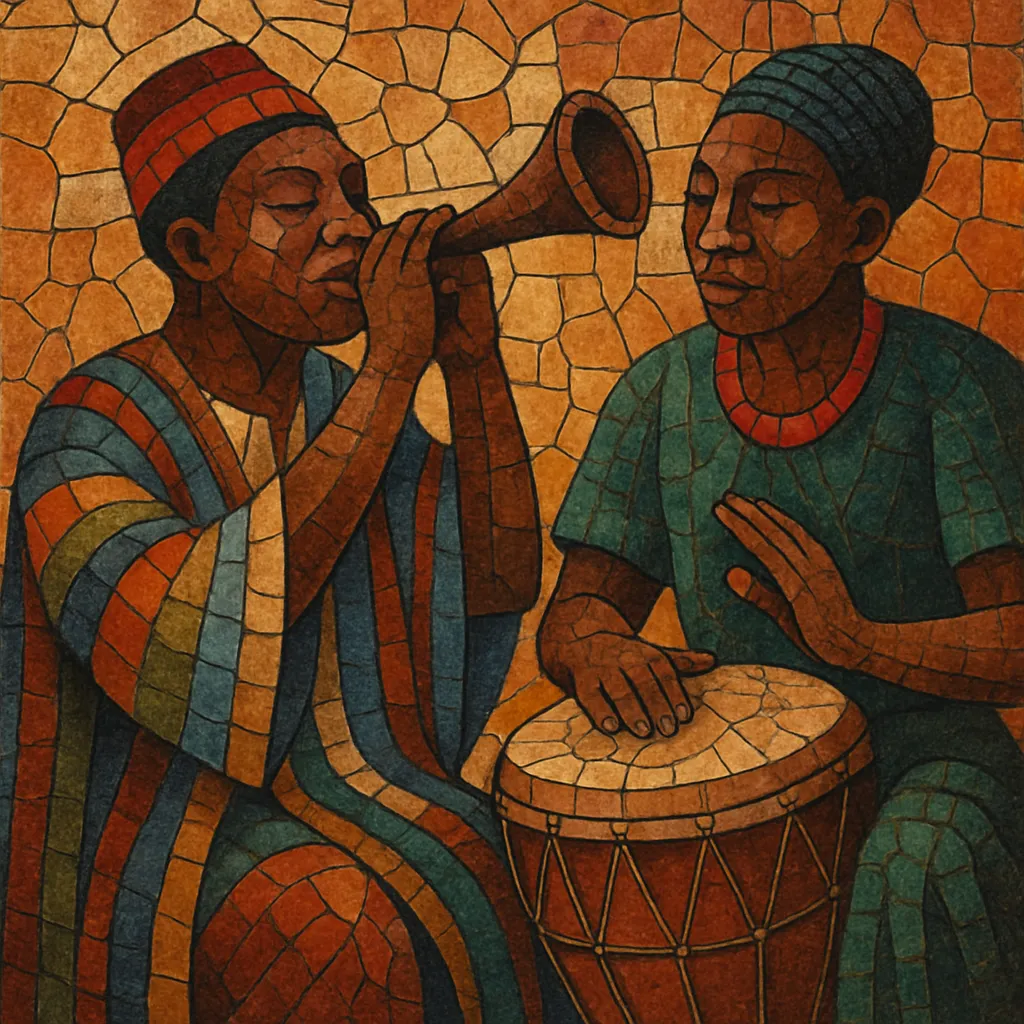Beni (often called beni ngoma) is a parading dance‑music tradition from the Swahili Coast that blends African ngoma aesthetics with the drill, uniforms, and instrumentation of European colonial military bands.
Performed at weddings, circumcision ceremonies, and public festivities, beni features marching formations, mock ranks and salutes, call‑and‑response singing in Swahili, and a lively, syncopated take on duple march rhythms. Ensembles typically center on bass and side drums, whistles, and brass or improvised horns, creating a bright, competitive street‑band sound.
Beyond entertainment, beni is noted for satire and social commentary: performers humorously mimic and critique colonial authority while asserting youth identity, urban pride, and community solidarity.
Beni emerged on the Swahili Coast—especially Zanzibar, Tanga, and coastal Tanzania—during the colonial era. Local youth adapted the spectacle of European military bands and ceremonial drill, combining them with ngoma (community drum‑dance) practices. By the 1900s–1910s, mock military ranks, uniforms, and parade routines had become signature features, while song and drum parts localized the sound.
Through ports and trade routes, beni spread along the East African littoral and into neighboring regions (including parts of Kenya, Mozambique, Malawi, and the Comoros). Performances took place at weddings, circumcisions, and civic festivities, often organized as rival “clubs” or troupes that competed in musicianship, precision marching, costumes, and wit. The music’s call‑and‑response vocals, humorous toasts, and satire made it a vehicle for social commentary and community bonding.
The core groove transforms European‑style 2/4 or 4/4 marches into propulsive street rhythms with off‑beat accents, polyrhythmic drum patterns, and energetic whistle cues. Brass or improvised horns carry fanfares and short melodies; bass and side drums articulate cadences and signal parade formations; leaders cue breaks, chants, and choreography.
After independence, beni’s prominence fluctuated but persisted in coastal celebrations and youth culture. Its parading drum‑and‑whistle energy and competitive ethos fed into later urban coastal styles, informing local street‑party traditions and, indirectly, high‑tempo Tanzanian forms such as mchiriku and (via mchiriku scenes and party practices) singeli.


